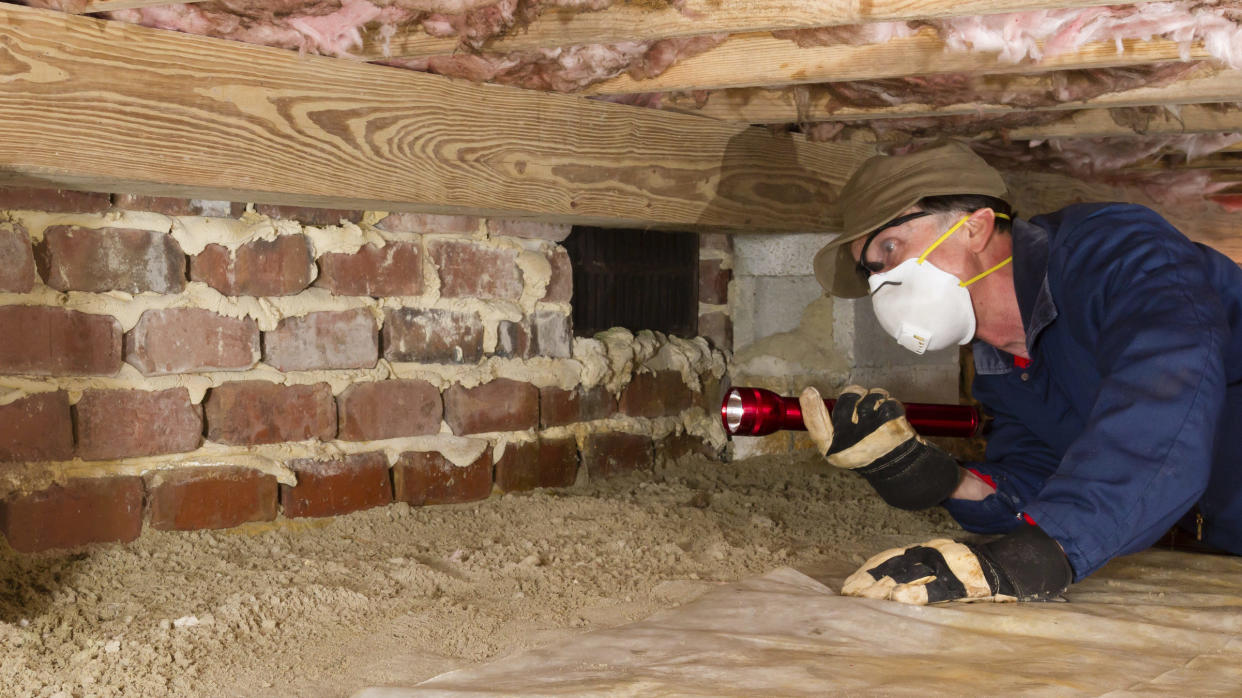What Is a Crawl Space? An Eye-Opening Peek Underneath Your Home
SLRadcliffe/istockphoto.com
Home buyers rarely give much thought to what’s right under their feet when touring homes, but they should—particularly if they’re strolling on top of a crawl space. When searching for a home, you might very well see that phrase in the listing features. But what exactly is a crawl space, and what do you need to know about it?
A crawl space is essentially a hollow area found under some homes between the ground and the first floor. It’s usually roughly 1, 2, to 3 feet high—just high enough for someone to enter by crawling, as its name implies.
Aside from elevating your home off the ground, a crawl space is a convenient and inconspicuous place to contain the “guts” of the house, such as its air conditioning and heater, duct work, plumbing, and electric wiring. Crawl spaces also provide some benefits beyond the usual alternatives—which include having a solid concrete foundation or a basement—along with a few drawbacks.
So whether you own a home with a crawl space or are considering buying or building one, here are the pros, cons, price, and more.
Benefits of a crawl space
Typically a crawl space is preferable to a concrete slab foundation because it allows you unrestricted access to all those “guts” we just mentioned: plumbing, electrical wiring, and heating and cooling systems.
“Issues like pipe leaks that would have otherwise required an excavation are much easier to resolve with a crawl space,” says Larry Greene, president of a home design and remodeling company in Indianapolis.
And while a basement also gives you unrestricted access to these systems—not to mention much more usable space—crawl spaces are cheaper than basements.
“When you’re building a home, a crawl space can cost as little as $8,000 to $25,000 for an average-size home,” says Greene. That’s much less than you’ll cough up for a basement, which Greene tells us can range from $75,000 to $150,000.
Crawl spaces are also preferable to basements if you live in a damp location that experiences a lot of rain or is prone to termites.
“Crawl spaces are most suited for areas with high moisture or in coastal areas with sandy soil, where excessive water can build pressure against a full basement and find its way into cracks,” says Scott Brown, owner of a home inspection company near Syracuse, NY.
Crawl space maintenance made easy
Keep in mind, however, that proper ventilation of a crawl space is essential to protect the structural integrity of your house—not to mention your health. Without ventilation, crawl spaces can give way to the “stack effect,” a process where moisture moves from the ground up through cracks in the floor into the home. A crawl space with excess moisture can be a breeding ground for mold, fungi, termites, and potentially even rodents.
So if you’re buying a home, it’s important to have your home inspector check out the crawl space before you sign on the dotted line.
To ventilate a crawl space, you have to install a vent to pump in air from your HVAC system, as well as an exhaust fan to move air from the crawl space to the outside. If your region is particularly wet, you can also install a dehumidifier.
Should you build a crawl space?
If you’re building a home and wondering if you should have a crawl space, know that the climate in your area largely decides whether you need to.
“Natural conditions such as frost line, soil type, drainage, slope, and water table depth usually lead construction best practices to one type over another,” says Brown. When in doubt, consult an engineer to know if a crawl space is right for you.
The post What Is a Crawl Space? An Eye-Opening Peek Underneath Your Home appeared first on Real Estate News and Advice - realtor.com.



